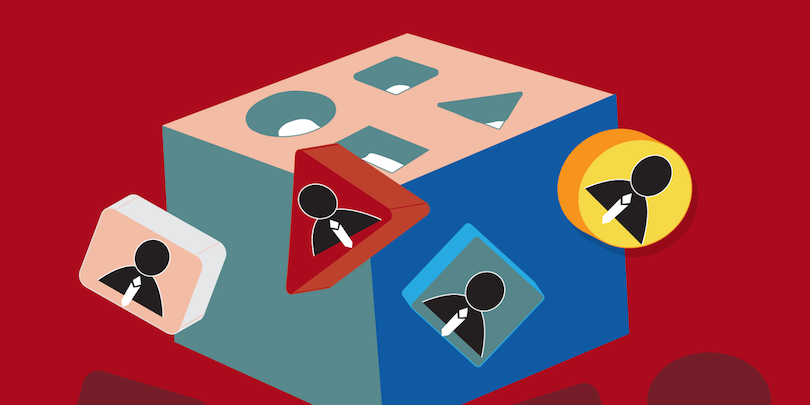Platform vs Single Application
This informative guide helps organizations and incentive program managers learn the differences and compare various types of loyalty and incentive fulfillment solutions. Whether you use a fully enabled customer engagement platform or a single application solution to process and manage reward and incentive fulfillment you want to understand the core differences. You need to ensure you get what is bargained for and the technology purchase addresses your overall organization’s incentives needs and solves the various engagement use case challenges identified to vendors when sourcing the incentive technology.
Making Sense of Reward Processing and Fulfillment Software
While looking for reward management software, you are likely to come across two solutions types.
Single application solutions have more targeted tools, and address single-use case reward issuance, and fulfillment processing challenges. In contrast, there are incentive platform systems whose sole purpose is their ability to solve many problems simultaneously.
Both types of technologies are important and have their place, but it might not be evident right away which is the right option for your incentive program management needs.
What is a Customer Engagement Platform?
A Customer Engagement Platform, simply put, is a platform technology that enables businesses to process and fulfill incentive payouts to a variety of client and or customer engagement use cases across their organization’s marketing initiatives.
The platform features are tools for improving operational efficiencies, lowering incentive costs, increasing pro-gram engagement, and providing a centralized nested hierarchical view of incentives for real-time insights and reporting.
Platforms are generative and actively evolve based on new ideas, technology, use cases, and behavioral attributes of the participants – pro-ducing novel solutions that will evolve to meet your unique incentive needs in one solution.

Platform Advantages
Every organization is different. Two organizations looking to solve the same incentive challenge may have completely different requirements (rewards issued, integrations, regulations, etc.).
Platforms can offer the ability to tailor a solution to your needs without the huge outlays commonly associated with most “custom” solutions.
Platforms developed in an Agile, object-based environment can easily add or modify a pre-built template layer on the Platform core functionality to add use-cases and scale as the situation calls for it.

What is a Single Application Solution?
Platforms are developed to do many things; incentive applications aim to accomplish narrower goals. A single application is any tool or software seeking to solve an organization’s single incen-tive use case challenge.
Whether it’s channel partner, employee recognition, health and wellness, online marketing, game, or rebate promotions, sales incentive – single application solutions throw the weight of the functionality behind a single problem or solution one at a time.
Advantages of a Single Application Solution
Traditionally, incentive program managers benefited from deploying simple single application solutions to focus on the specific program needs missing from a more all-encompassing one-size-fits-all solution.
Program managers typically settle on fewer bells and whistles and more complicated core functionality to deliver their solution well.

Evaluating Your Options: Platforms vs. Single Application Solutions
When selecting the right technology for your incentive programs, understanding the fundamental differences between platform solutions and single application solutions is crucial. This section delves deeper into each option, helping you to make an informed decision based on your organizational needs and strategic goals.
Platform Solutions - Comprehensive and Scalable
Platform solutions are designed to address a wide range of incentive challenges across an organization through a single, integrated system. These platforms offer a robust suite of tools that enable businesses to manage diverse programs from one central location, enhancing operational efficiencies and reducing overhead costs. Key advantages include:
- Scalability: Platforms are built to grow with your business, accommodating new types of programs, additional users, and more complex requirements without the need for significant changes to the infrastructure.
- Customization: With platforms, customization is a built-in feature, allowing businesses to tailor functionalities to meet specific engagement scenarios without extensive development time or costs.
- Integration: Seamless integration with existing systems ensures that platforms can pull and analyze data across various touchpoints, providing deeper insights and more effective program management.
- Futureproofing: Platforms evolve with advancements in technology and changes in business strategy, ensuring that your investment remains relevant and effective over time.
Single Application Solutions - Targeted and Efficient
For organizations with specific, well-defined incentive needs, single application solutions can provide a focused approach that may yield quicker deployments and lower initial costs. These solutions are ideal for addressing single-use cases with precision. Advantages include:
- Simplicity: Easier to implement and use, single applications reduce the learning curve and operational disruption often associated with new software deployments.
- Cost-Effectiveness: With lower initial outlays and focused functionalities, single applications can offer a cost-effective solution for small-scale or less complex requirements.
- Quick Deployment: These solutions can be deployed rapidly, providing a quick return on investment and immediate improvements to specific program challenges.
Considerations for Decision Making
Choosing between a platform and a single application depends on several factors:

- Long-term vs. short-term needs: Consider whether your current technology will suffice as your business grows or if you will eventually need to upgrade or integrate additional systems.
- Complexity of needs: Evaluate the complexity and diversity of your incentive programs. A more intricate, varied program landscape will benefit more from a platform approach.
- Resource availability: Assess your organization’s capacity to implement and maintain the chosen solution, including staffing, budget, and IT support.
Time to Decide
Single application or Platform? Which makes more sense for you and your organization?
Thus far, we’ve reviewed some important differences between incentive reward management platforms and single application reward fulfillment solutions with the hopes that you are bet-ter prepared for what lies ahead spending your time and money.
Ready to Take Your Consumer Engagement to the Next Level?
Contact us today to learn more about pricing and plans for our customizable consumer engagement solutions and take your business to the next level!
Schedule A Demo
"*" indicates required fields



